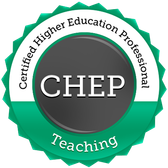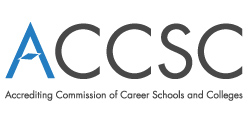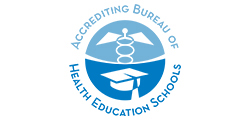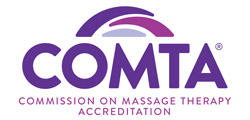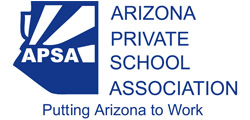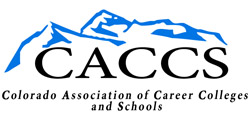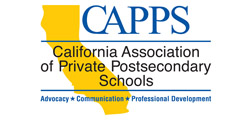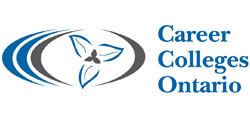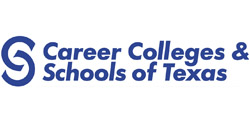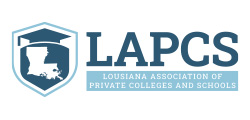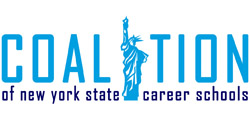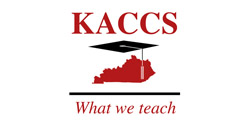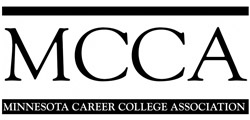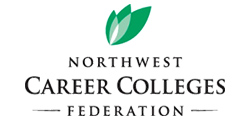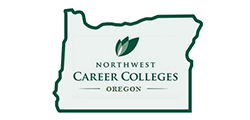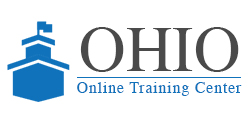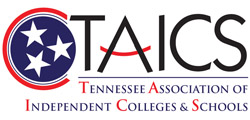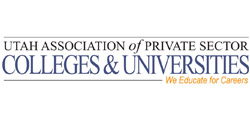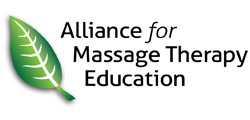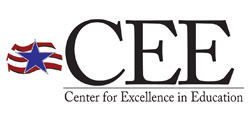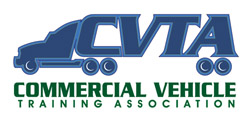Badge Evidence | Completed Courses (4 Hours Each)
CM107-CRDSustaining a Culture of Compliance: The Role of Faculty and Staff
This course is designed for either an institution's full or part time staff and faculty members. The course focuses on building and sustaining a campus-wide culture of compliance as opposed to simply providing a multitude of standards and regulations. In short, CM107 hopes to provide the information staff and faculty need to say or do the right things when interacting with both prospective and enrolled students about their education - online or face-to-face - as well as the consequences of saying or doing the wrong things whether by mistake or with intent. Components on ethics, customer service and fostering a culture of compliance in the new normal of educational delivery are also included.
This is a private course intended for associates employed by Concorde Career Colleges.
EC115Integrating Career Readiness Into Your Courses: Part I
This course will provide an overview of career readiness including information and activities that may be incorporated into your courses. This course, which forms Part I of a two-part series, provides details about four specific career readiness skills: critical thinking/problem solving, verbal/written communications, teamwork/collaboration, and information technology applications. Additional thoughts and resources will also be provided to allow you to consider multiple ways to assist students in developing these skills in your courses.
EC116Integrating Career Readiness Into Your Courses: Part II
This course will provide a brief review of career readiness and provide additional skills to incorporate into your courses. This course is Part II of a two (2) part series of courses. Therefore, this course will provide details about four (4) additional specific career readiness skills. These skills include leadership, professionalism/work ethic, career management, and global/multicultural fluency. Further thoughts and resources will also be provided to allow instructors to consider additional ways to incorporate these skills into their courses.
EC131How to Develop Virtual Reality Lessons
Virtual reality (VR) lessons can be implemented in all subject areas, and this course is designed to get teachers thinking about how it can be used in their classrooms. VR can be a nice addition to the teaching toolkit, but some resources, including hardware, will be needed. In this course we use the Meta Quest 2 headset by Oculus, but the results will be similar if different headsets are used. Various software applications will be shared that teachers can acquire for little or no cost.
EC140Introduction to Positive Psychology for Educators
Positive psychology is the science of human flourishing and is leveraged to cultivate well-being for students, teachers, and staff in schools around the world. You'll be introduced to the tools of positive psychology to help you and your students thrive in the classroom and in life. This course is designed to help you understand the science of well-being and how to employ it for yourself and in educational settings to support well-being and academic achievement. The modules cover positive psychology's origins, and the research and application of the PERMA model, Character Strengths, and positive education.
EC150Assessment Strategies for CTE Educators
During this course, participants will learn strategies for planning and implementing assessments in hands-on classes and career and technical education (CTE) learning environments. Effective design and implementation of assessments helps ensure that all students can grow and develop as learners' empowering them to build on their strengths. Perhaps even more important, good assessments help educators design their courses. In this course, educators will learn how to view assessments as formative representations of what students know at that moment, tools to help students understand how they learn and become expert learners, and essential instruments educators can use to actively assess their own approaches and instructional practices.
EC151Creating a Safe & Engaging CTE Environment for All Executive Functioning
This course aims to help CTE educators at the postsecondary level refine their teaching practice by creating welcoming, engaging classrooms (or shops, labs, theaters, farms, studios, job sites, etc.) for all learners. Participants in this course will explore how to create safe, meaningful, and engaging learning environments. You’ll learn about how to foster creative problem solving, bring student voice and experience into the classroom, bolster student engagement, and create a dynamic, learner-centered CTE environment.
This course is intentionally designed through the lens of Universal Design for Learning, or UDL. UDL is a research-based educational approach that optimizes teaching and learning. This course will highlight UDL-aligned practices and include concrete examples of how you can apply these practices in your CTE courses.
EC152Supporting Executive Functioning in CTE
Executive functions enable learners to do the following:
- Set goals
- Plan and strategize how they will meet goals
- Manage information and resources
- Monitor and assess their progress toward goals
EC153Strengthening CTE Instruction with Clear Learning Goals
This course, designed especially for CTE educators, explores the role that goals play in learning and how they are an important part of a CTE course. Simply put, learning goals give students a clear understanding of what they are expected to know and be able to do by the end of a learning experience or unit of study. When an instructor sets clear goals for their courses, or for a learning experience, students know where they’re headed. Just as a GPS lets travelers know where they will arrive at the end of their journey, a clear goal gives learners an understanding of what is expected of them.
Universal Design for Learning (UDL) is a framework to improve and optimize teaching and learning for all people based on scientific insights into how humans learn. When a CTE teacher designs instruction using the UDL framework, they start with a clear learning goal, consider the variability of learners in their course, predict what barriers learners might face when trying to meet the goal, and then, design their instruction to remove as many barriers as possible. When teachers approach instructional design using UDL, learning environments are more accessible, inclusive, equitable and challenging for every learner. And, these equitable learning environments all begin with clear learning goals! (CAST, The Goal of UDL)
ED101Effective Teaching Strategies
This introductory course covers the essential roles of a teacher and the competencies required to be a successful instructor in an educational institution. Proven techniques and strategies for planning and preparation are presented and discussed. In addition, the course offers effective methods for conducting the first class meeting and delivering course content. This course provides a solid foundation for new instructors and serves as an excellent refresher for more experienced instructors.
ED102Student Retention Methods
The instructor is the real key to student retention at any educational institution. Instructors must keep focused on student motivation and retention each and every day of class. Developing strategies for retaining students throughout the entire training sequence is both complex and rewarding. All instructors should have the goal of seeing all of their students successfully complete their class. This course helps you reach that goal by helping you to understand your students and use proven motivation and retention techniques to keep them enrolled and engaged in the learning process.
ED103Student Learning and Assessment
Educators work with students who want to learn specific skills that will lead to fulfilling careers. As educational instructors it is our job to help each student to achieve this goal. Just as you may have a particular style of teaching that you prefer, your students have preferred ways of learning. This course will help you to identify the different learning styles of your students so that you can adjust your instruction to better accommodate them. Good teachers also regularly monitor the effectiveness of their instruction by assessing their students’ learning. This course will examine several aspects of assessment including how to create good tests, how to ask effective questions and how to get your students to actively participate in their learning by asking questions themselves.
ED104Class Management Strategies
This course provides methods and techniques for managing students and class activities. We start by reviewing the steps instructors need to follow as they introduce a class to new students. We then discuss strategies to effectively deal with unfocused and challenging students. The course ends by describing common mistakes made by instructors and ways to avoid them.
EL101Designing and Developing Online Courses
This introductory course will provide you with the knowledge and skills to create successful online courses, whether for faculty-supported distance education delivery or as a supplement to classroom instruction. You will learn to design and develop online courses that have structural integrity and navigational simplicity with a focus on student-centered learning and intellectual interaction. The course covers various learning activities that are supported in an e-learning environment and describes the typical components of an online course. We will provide you with the media strategies and course design methodologies that will allow you to develop online courses in an effective and efficient manner.
EL102Online Teaching Techniques
Your degree of success as an online instructor relies heavily on several factors, among which are your level of preparedness before the date on which the course is launched; your ability to make a smooth transition into the roles and responsibilities associated with teaching in an online environment; and the effectiveness and efficiency with which you manage learners, instructional transactions embedded in the course as well as the learning environment. In this course, you will learn how to project your authority and presence into the e-learning environment, build a relationship with each learner, promote and nurture learner participation, provide informative and constructive feedback in a timely manner, minimize attrition, manage communications, manage unacceptable behavior and resolve disagreements.
EL103RTeaching Online: A Student-Centered Approach
This course will provide you with the knowledge and skills to successfully author, teach, assess, and revise online courses. You will learn to develop a course framework with consistent modules. Building an online community and constructing a dynamic syllabus are important in helping you communicate with students. You will also learn how to develop an assessment plan that includes peer and self-assessment. No online course is complete without a comprehensive revision cycle. This course will walk you through the process of "closing the loop" to create a complete revision and improvement plan for your online course. We will provide you with ideas for student-centered learning that includes activities and intellectual interactions using a variety of technological tools.
EL113Active Learning in an Online Environment
This course will provide you with a basic overview of the background and history of the popular instructional method called active learning. This method differs from traditional educational methods such as the lecture model. Active learning has a definite place in education especially in the online learning environments. It is used to support teaching outcomes like critical thinking skills, interpersonal skills and knowledge acquisition that all instructors wish for their students. However, active learning it calls for a change of attitude on the part of students and the instructor in order to be successful. But the advantages far outweigh the disadvantages as it can make students enthusiastic about learning. Learn about this brave new world of teaching and learning for the next generation.
HE106CStudent Information, Rights, and Safety
In this lesson, you'll review the federal and accreditation standards governing the collection and disclosure of student information. In addition, federally mandated campus safety standards that impact operations at postsecondary institutions are reviewed.
Topics covered in this lesson include:
- Family Education Rights and Privacy Act (FERPA)
- Record of Complaint
- Title I of the Student Right-to-Know
- School Safety Enhancements Act
This is a custom version of HE106 providing a certification of completion.
